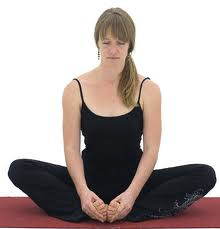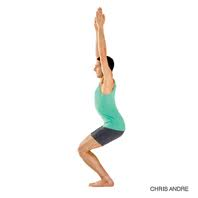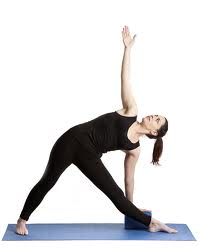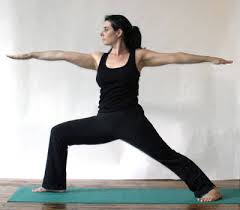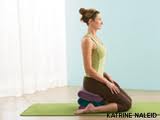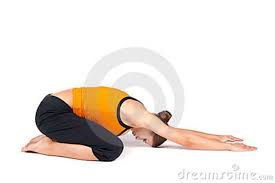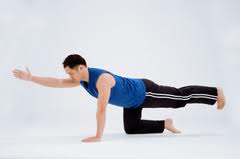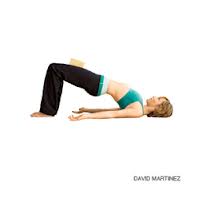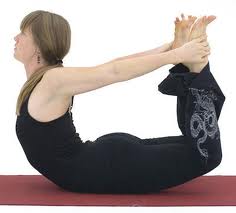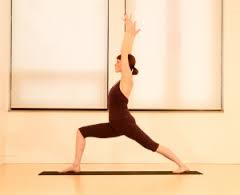In my previous post, I presented a brief description of the anatomy of the knee joint, the importance of both strengthening and stretching the leg muscles, and some cautions regarding movement and alignment. In this post, we’ll look at some yoga poses as they relate to the knee.
Baddha Konasana (Bound-Angle Pose) – warm up and open hips before doing standing poses that stress knees
Utkatasana (Chair Pose) – this can be done with the back against a wall. Lift toes and press equally into all four corners of the feet to insure that inner quads are working as strongly as the outer quads.
Sandy Blaine, yoga instructor at the Yoga Room, suggests balancing on one foot with the eyes closed to achieve the same effect.
Trikonasana (Triangle Pose) and Uttanasana (Standing Forward Fold) – avoid hyperextending knee joint by pulling the kneecap upward or firming the muscles above the kneecap
Virabhadrasana II (Warrior II) – align bent knee over ankle and move knee cap in line with middle toe; press down evenly through back foot and keep arch of front foot lifted – practicing this pose may alleviate inner knee pain by opening internal hip rotators and strengthening external hip rotators
Virasana (Hero Pose) – utilize props (block and/or blanket) to raise seat
Balasana (Child’s Pose) – try placing a rolled-up cloth in knee pit to relieve pressure
Chakravakasana (Sunbird Pose) – this is a variation of cat-cow in which one leg is extended back and lifted above hip height, foot turned outward. This pose corrects limitation in external hip rotation which might be felt in Janu Sirsasana (Head-to-Knee Pose or in Vrksasana (Tree Pose)
Setu Bandhasana (Bridge Pose) – focus attention just above the knees to strengthen quadriceps
Salabhasana (Locust) and Dhanurasana (Bow Pose)
These poses will improve knee flexion by strengthening hamstrings and stretching quadriceps
Virabhadrasana I (Warrior I) – avoid squaring hips – hips should be in a diagonal line with knees and toes; upper ribs and shoulders move forward

